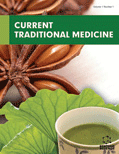
Abstract
Background and Aims: Cancer is the cause of many deaths and is the second most prevalent cause of death worldwide. Besides its high mortality, cancer can cause emotional and economic burdens on patients and society. Hypericum is known as herbal medicine that has many species. Its anticancer effects have been proven in various articles. It has many active compounds, including flavonoids, phloroglucinols, and phenylpropanoids. The current review aimed to collect data on the anticancer potential of Hypericum on different types of cancer cell lines and their chief mechanisms.
Methods: A search was conducted on PubMed, Scopus, Web of Science, ScienceDirect, ResearchGate, and Google Scholar databases to find relevant studies on the anti-cancer potential of Hypericum perforatum and its underlying mechanisms of action in different cancers. The relevant English language articles published up to March 2022 were collected, screened, and reviewed.
Results: The anti-cancer effects of Hypericum perforatum were shown against glioblastoma, neuroblastoma, leukemia, and liver, breast, prostate, lung, bladder, colon, skin, and pancreatic cancers. It can induce apoptosis by activating caspase enzymes and inhibit cell growth in different cancer cell lines. Also, the cytotoxic effects of Hypericum perforatum extract on cancer cell lines were shown in in vitro studies.
Conclusion: Hypericum perforatum can be proposed as a strong herbal remedy for the treatment of cancer since it is an available and cheap treatment for cancer compared to other treatments, but further clinical trial studies should be performed to confirm these properties.
Keywords: Hypericum, St John's-wort, anti-cancer, herbal medicine, death, cancer.
[http://dx.doi.org/10.3322/caac.21262] [PMID: 25651787]
[http://dx.doi.org/10.1093/jncimonographs/lgh014] [PMID: 15263042]
[http://dx.doi.org/10.1016/S2214-109X(20)30215-1] [PMID: 32710860]
[http://dx.doi.org/10.25258/ijddt.10.1.32]
[http://dx.doi.org/10.1007/s11060-011-0743-x] [PMID: 22052333]
[http://dx.doi.org/10.1056/NEJMoa1108898] [PMID: 22335737]
[http://dx.doi.org/10.3747/co.v17i4.526] [PMID: 20697524]
[http://dx.doi.org/10.2174/1389557515666150709105844] [PMID: 26156546]
[http://dx.doi.org/10.1016/j.supflu.2011.07.007]
[http://dx.doi.org/10.3390/genes11101210] [PMID: 33081197]
[http://dx.doi.org/10.2174/1389450023348091] [PMID: 11899265]
[http://dx.doi.org/10.1142/S0192415X11008737] [PMID: 21213407]
[http://dx.doi.org/10.3892/ol.2016.4247] [PMID: 27073499]
[PMID: 29599335]
[http://dx.doi.org/10.3390/nu12020457] [PMID: 32059369]
[http://dx.doi.org/10.1002/ptr.6977] [PMID: 33295678]
[http://dx.doi.org/10.1002/med.21422] [PMID: 28004409]
[http://dx.doi.org/10.3389/fsurg.2016.00021] [PMID: 27148537]
[http://dx.doi.org/10.1186/s12906-016-1351-2] [PMID: 27647142]
[http://dx.doi.org/10.1016/j.phymed.2018.06.013] [PMID: 30668384]
[http://dx.doi.org/10.1111/jphp.12050] [PMID: 23647684]
[http://dx.doi.org/10.2478/acph-2014-0020] [PMID: 24914722]
[http://dx.doi.org/10.5301/tj.5000525] [PMID: 27514316]
[http://dx.doi.org/10.1016/j.critrevonc.2012.05.005] [PMID: 22743346]
[http://dx.doi.org/10.1016/j.clon.2010.09.004] [PMID: 21030225]
[http://dx.doi.org/10.1186/s13014-014-0297-0] [PMID: 25544371]
[http://dx.doi.org/10.3322/caac.20107] [PMID: 21296855]
[http://dx.doi.org/10.3748/wjg.v13.i13.1989] [PMID: 17461503]
[http://dx.doi.org/10.3892/mco.2012.52] [PMID: 24649182]
[http://dx.doi.org/10.3892/mmr.2015.4086] [PMID: 26239512]
[http://dx.doi.org/10.3390/molecules24193568] [PMID: 31581734]
[http://dx.doi.org/10.1515/znc-2002-9-1028] [PMID: 12440735]
[http://dx.doi.org/10.3390/nano10091696] [PMID: 32872181]
[http://dx.doi.org/10.1677/erc.0.0060503] [PMID: 10730904]
[http://dx.doi.org/10.1002/1097-0142(19920701)70:1+<254:AID-CNCR2820701312>3.0.CO;2-E] [PMID: 1350941]
[http://dx.doi.org/10.1016/S0022-5347(01)67288-4] [PMID: 7776439]
[PMID: 8074475]
[http://dx.doi.org/10.1016/j.canlet.2004.01.031] [PMID: 15172117]
[http://dx.doi.org/10.1016/j.drudis.2012.10.002] [PMID: 23064097]
[http://dx.doi.org/10.1016/j.jnutbio.2014.12.002] [PMID: 25704478]
[http://dx.doi.org/10.1007/s00497-013-0227-6] [PMID: 23846415]
[http://dx.doi.org/10.1016/j.compbiolchem.2019.02.010] [PMID: 30861403]
[http://dx.doi.org/10.1056/NEJMoa1911793] [PMID: 31995683]
[http://dx.doi.org/10.1111/jfbc.12248]
[http://dx.doi.org/10.1016/j.apsusc.2015.03.176]
[http://dx.doi.org/10.1002/aoc.5667]
[http://dx.doi.org/10.1016/S0304-3940(02)00644-4] [PMID: 12165406]
[http://dx.doi.org/10.1002/ptr.2248] [PMID: 17674426]
[http://dx.doi.org/10.1254/jphs.FP0061088] [PMID: 17443057]
[http://dx.doi.org/10.1007/s12010-018-2713-7] [PMID: 29476319]
[http://dx.doi.org/10.1016/j.phymed.2008.04.008] [PMID: 18539018]
[http://dx.doi.org/10.1038/sj.onc.1205190] [PMID: 11850844]
[http://dx.doi.org/10.1186/s12935-016-0279-4] [PMID: 26865836]
[http://dx.doi.org/10.1016/j.yrtph.2015.11.010] [PMID: 26617407]
[http://dx.doi.org/10.12692/ijb/3.12.265-272]
[http://dx.doi.org/10.1007/s11010-017-3147-1] [PMID: 28795251]
[http://dx.doi.org/10.3390/ijms19040966] [PMID: 29570671]
[http://dx.doi.org/10.1038/cdd.2010.116] [PMID: 20885445]
[http://dx.doi.org/10.3390/nu12103175] [PMID: 33080824]
[http://dx.doi.org/10.24264/icams-2016.II.9]
[http://dx.doi.org/10.1016/j.jphotobiol.2006.02.001] [PMID: 16540336]
[http://dx.doi.org/10.1186/s12860-019-0205-4] [PMID: 31221093]
[http://dx.doi.org/10.2202/1553-3840.1283]
[http://dx.doi.org/10.3390/molecules24224139] [PMID: 31731693]
[http://dx.doi.org/10.1039/c2fo10226a] [PMID: 22596086]
[http://dx.doi.org/10.1124/dmd.104.002485] [PMID: 15640377]
[http://dx.doi.org/10.1038/sj.bjp.0704399] [PMID: 11739235]
[http://dx.doi.org/10.1016/j.bpj.2018.11.1472]
[http://dx.doi.org/10.1042/CBI20120108] [PMID: 23005701]
[http://dx.doi.org/10.1111/j.1751-1097.2007.00260.x] [PMID: 18179625]
[http://dx.doi.org/10.1371/journal.pone.0103762] [PMID: 25076130]
[http://dx.doi.org/10.1007/s13277-015-4552-2] [PMID: 26676634]
[http://dx.doi.org/10.1016/j.fitote.2020.104685] [PMID: 32673639]
[http://dx.doi.org/10.1016/j.phymed.2004.02.011] [PMID: 16194057]
[http://dx.doi.org/10.1016/j.phymed.2006.09.017] [PMID: 17095201]
[PMID: 19724864]
[http://dx.doi.org/10.15835/nsb11410597]
[http://dx.doi.org/10.1002/ptr.1271] [PMID: 13680832]
[http://dx.doi.org/10.1016/S0939-6411(03)00046-8] [PMID: 12837490]
[http://dx.doi.org/10.1155/2020/4314807]
[http://dx.doi.org/10.7243/2050-120X-1-6]
[http://dx.doi.org/10.1016/j.jep.2020.112948] [PMID: 32417427]
[http://dx.doi.org/10.1016/j.phytochem.2009.08.015] [PMID: 19766276]
[http://dx.doi.org/10.1242/jcs.00247] [PMID: 12538758]
[http://dx.doi.org/10.1016/j.phytochem.2019.112216] [PMID: 31841782]
[http://dx.doi.org/10.1111/anae.14545] [PMID: 30600548]
[http://dx.doi.org/10.7314/APJCP.2015.16.7.2763] [PMID: 25854360]
[http://dx.doi.org/10.1080/10934529.2016.1206385] [PMID: 27458758]
[http://dx.doi.org/10.1158/1940-6207.CAPR-14-0113] [PMID: 26069204]
[http://dx.doi.org/10.1016/j.trsl.2006.05.007] [PMID: 17162253]
[http://dx.doi.org/10.1007/s12032-017-0886-5] [PMID: 28101834]




























